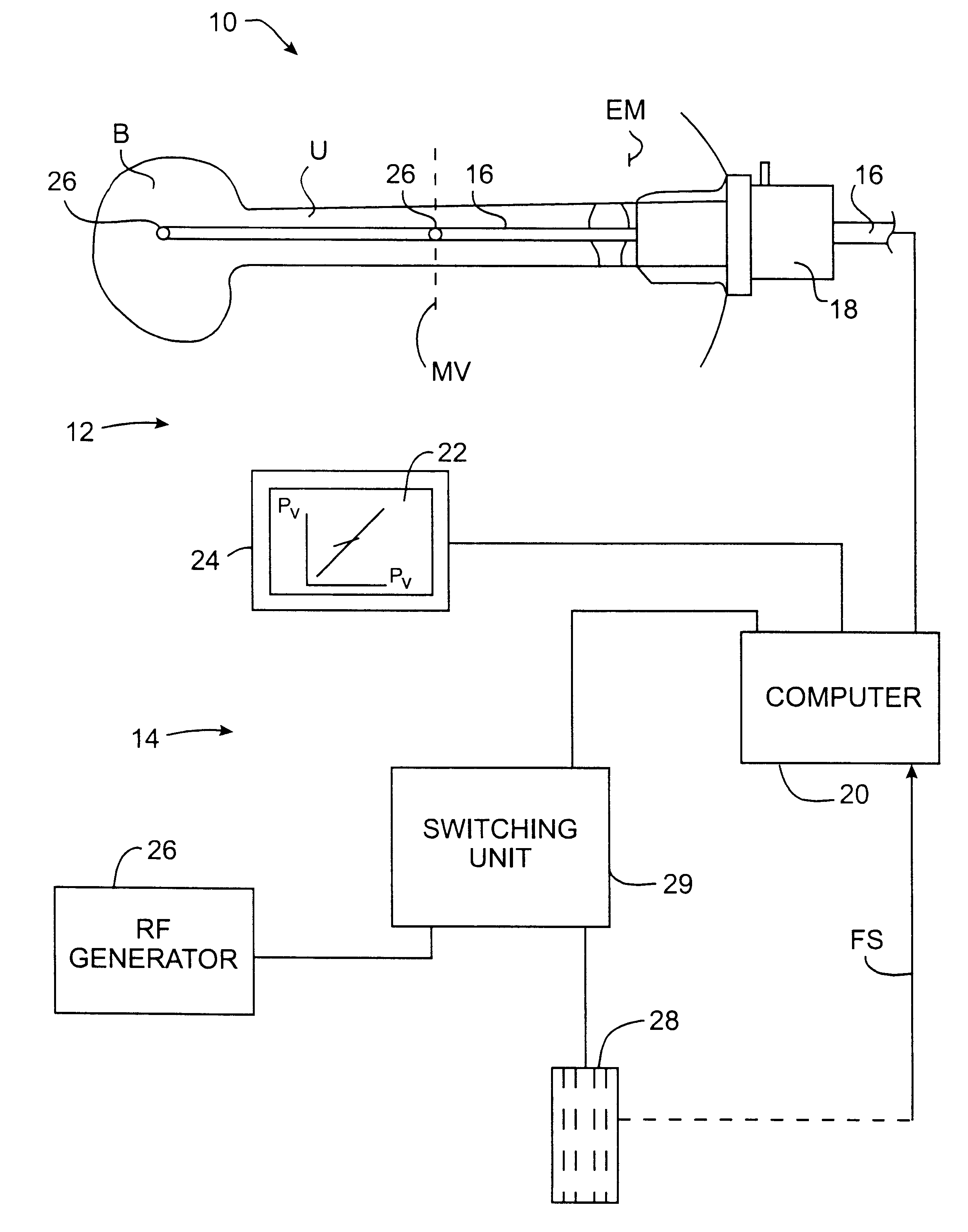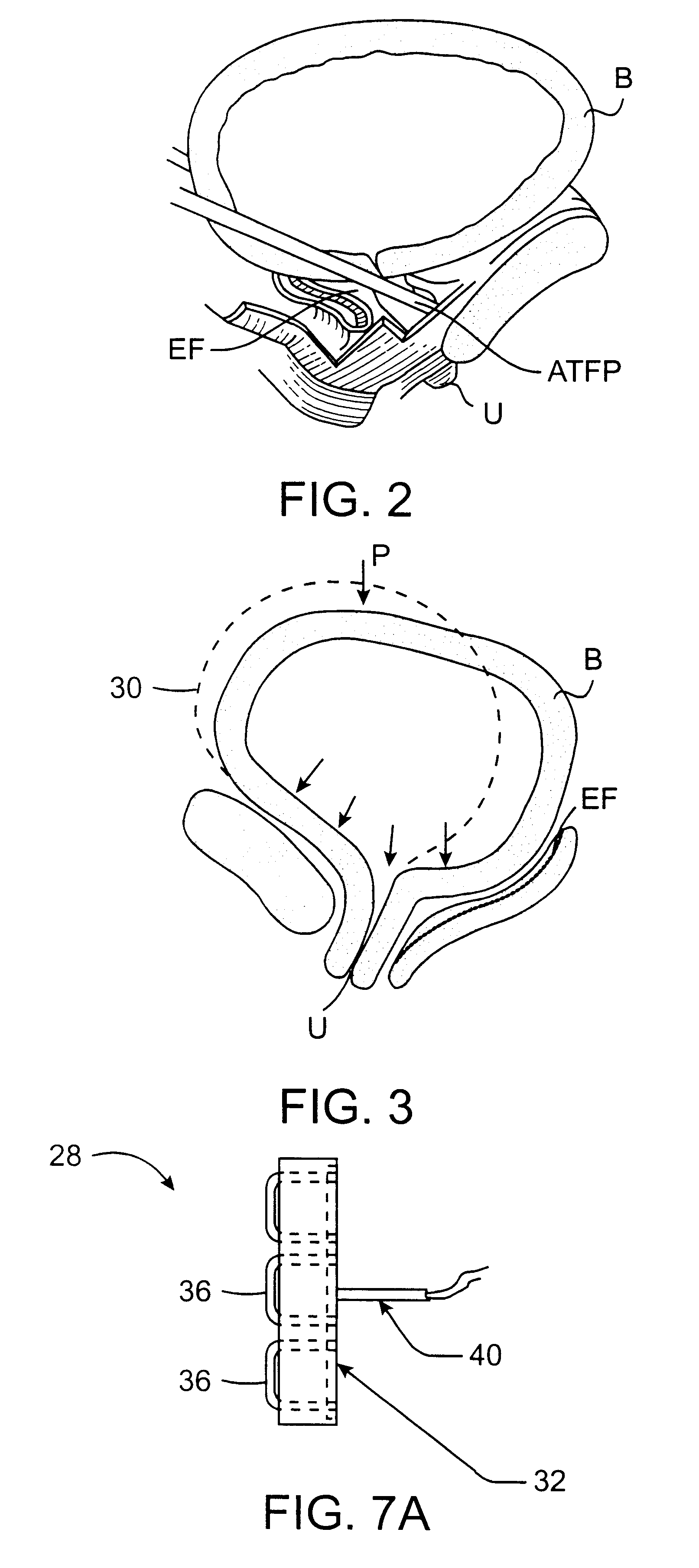Endopelvic fascia treatment for incontinence
- Summary
- Abstract
- Description
- Claims
- Application Information
AI Technical Summary
Benefits of technology
Problems solved by technology
Method used
Image
Examples
Embodiment Construction
The present invention generally provides methods, devices, and systems which enhance the structural support provided by a body's tissues, particularly as a therapy for incontinence. The techniques of the invention will generally involve promoting the formation of scar tissue so as to stiffen a tissue structure, and / or the attachment of two adjacent tissues (which are normally free to slide relative to each other) to each other. Energy may be directed from a probe into one or more fascial tissues of the pelvic support system. The energy may lead to the formation of stiff scar tissue, and / or it may attach adjacent fascial tissues together by fusing, cross-linking of collagen, the formation of adhesions, or the like. Optionally, the energy may also cause contraction of the fascial tissue by heating this collagenous layer to a contraction temperature over about 60.degree. C. Alternatively, stiffening and / or attachment of adjacent fascial layers may be provided without significant contra...
PUM
 Login to View More
Login to View More Abstract
Description
Claims
Application Information
 Login to View More
Login to View More - R&D
- Intellectual Property
- Life Sciences
- Materials
- Tech Scout
- Unparalleled Data Quality
- Higher Quality Content
- 60% Fewer Hallucinations
Browse by: Latest US Patents, China's latest patents, Technical Efficacy Thesaurus, Application Domain, Technology Topic, Popular Technical Reports.
© 2025 PatSnap. All rights reserved.Legal|Privacy policy|Modern Slavery Act Transparency Statement|Sitemap|About US| Contact US: help@patsnap.com



